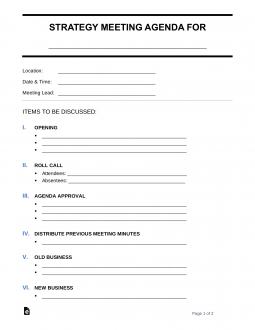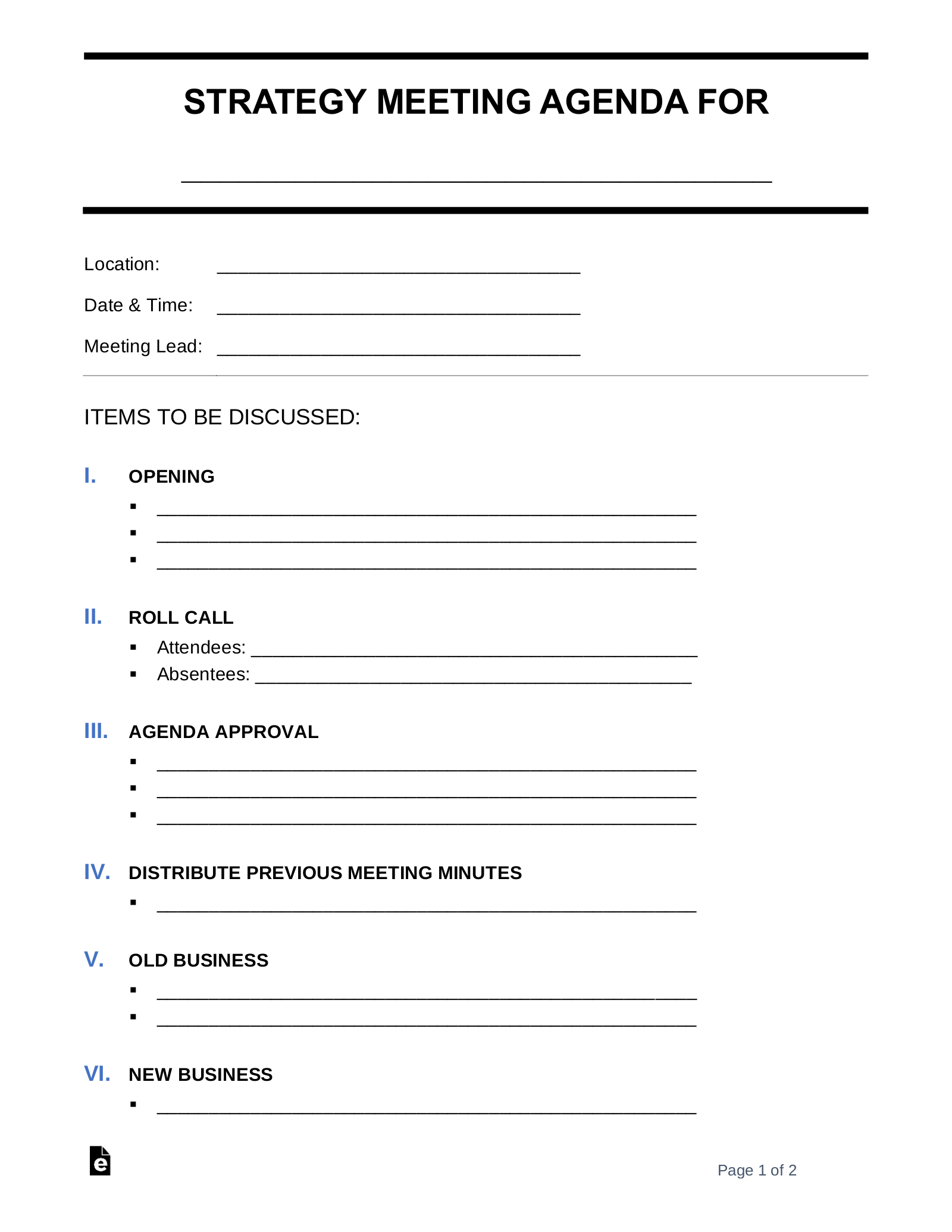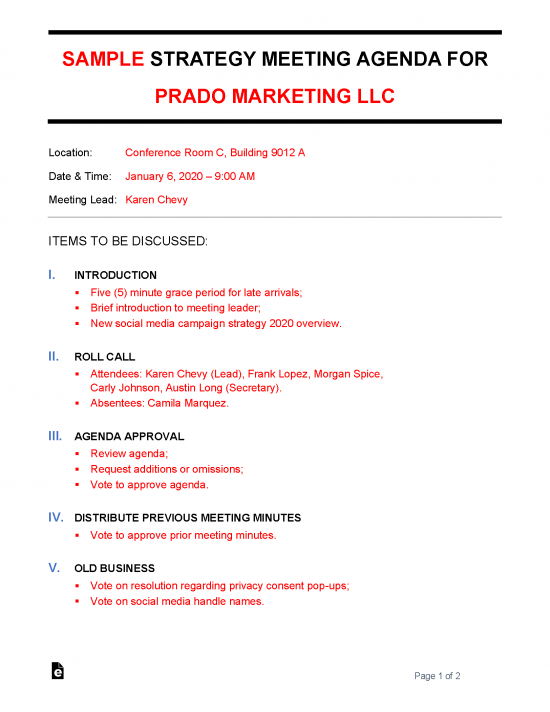Updated August 08, 2023
A strategy meeting agenda provides a written guide for all attendees to follow during a meeting in which a certain strategy or business plan is being discussed. On the agenda, the meeting leader/facilitator can stipulate the items of discussion that will comprise the entirety of the meeting. Effective agendas usually begin with a brief introduction of the strategy meeting’s general purpose and end with an open forum in which attendees share feedback and ask questions. However, the formatting of the agenda can be left at the discretion of the meeting leader in accordance with the goals of their business or organization. The main purpose of an agenda is to facilitate the flow of a meeting while providing attendees with a reference regarding the items that are to be discussed.
Table of Contents
Formatting (9 parts)
The formatting of a strategy agenda may vary depending on the nature of its usage. Below is a general template for businesses, organizations, and boards; items can be altered or even added.
I. Meeting Details
The leader/facilitator of the meeting shall include basic meeting details, such as date, time, and location. A dial-in number or URL can be provided instead of a physical location if the meeting will be held online through a video-conferencing application (such as Zoom, Skype, etc).
II. Opening
The opening item of the agenda can simply be an introductory statement in which the meeting leader communicates the purpose of the meeting and introduces their credentials. Many individuals also use this time to allow for a grace period (anywhere from 5-10 minutes) for any late arrivals.
III. Roll Call
All attendees and absentees of the meeting can be listed after taking attendance and going through standard roll call.
IV. Agenda Approval
The agenda should be distributed among all the attendees. After all the parties review items on the docket, the meeting leader can seek approval from attendees to proceed with the agenda in its current form. Note that approval of the agenda may only apply to certain organizations or boards.
If approval is not required, the meeting leader can simply use this slot to introduce the agenda by overviewing the items.
V. Distribute Previous Meeting Minutes
The individual in charge of distributing meeting minutes, usually a secretary, seeks approval from the attendees for the prior meeting’s minutes. Members of the meeting shall approve the minutes based on the accurate description of previous discussions.
Again, note that distribution of meeting minutes may only apply to certain organizations or boards. Feel free to omit this item from the agenda at the discretion of the meeting lead.
VI. Old Business
Before diving into the new strategy plan, it is worth reviewing prior strategies/plans and the results they yielded since being implemented. Many meeting leads address the most positive and negative results of those previous strategies, detailing key takeaways along the way.
Unfinished business from prior projects can also be resolved during this allocated time on the agenda.
VII. New Business
This item on the agenda should be the primary focus of the meeting as well as have the most minutes dedicated to its discussion. Here, the meeting leader will present a new or revised strategy for all attendees. The plan of action should be explained in a thorough yet effective manner; visual elements alongside a prepared speech can help better communicate the upcoming strategies.
When applicable, decisions on new strategies or changes to an existing one can be put to a vote among all attendees during this item on the agenda.
VIII. Round-Robin / Open Discussion
It is essential to open the floor for questions and related comments given the new strategies being discussed. An effective way to do this entails each attendee chiming in with their input on the matters in question.
Additionally, having this item on the agenda will encourage attendees to reserve their questions until the allocated time for open discussion.
IX. Adjournment
Lastly, the individual in charge will conclude the meeting when all items have been discussed or upon the set end-time of the meeting. The authorized person can approve meeting minutes upon adjournment, if applicable.
Sample – Strategy Meeting Agenda
Download: PDF, MS Word, OpenDocument



